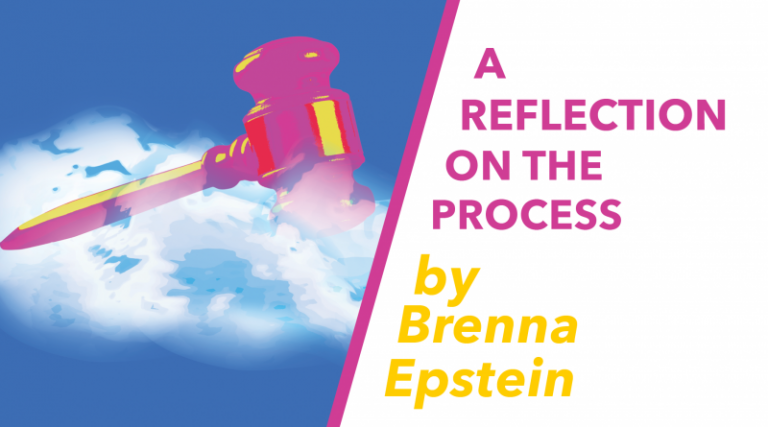Auditioning…thousands of miles away
Later today, Emerson Stage will send out audition announcements for two upcoming shows to eligible members of the Emerson community. That’s why, today, we’re going to talk about the most frequently asked question we receive when we send these casting calls out:
I’m studying abroad right now, but I’ll be home before rehearsals start. Is there still a way for me to audition?
And the answer is: Yes! Absolutely. You can do a video audition.
Video auditions are the wave of the not-so-much-future-anymore: you’re basically doing the audition in your own space, taping it, and sending it to the casting team for consideration. The ubiquity of video cameras these days and a magical thing called the internet make it easier than ever to participate in a New York theater audition while doing regional work thousands of miles away, but actors have been putting themselves on tape since the days when there actually was tape involved.
Generally, going on tape remains something that’s done by invite only, but — especially for high-stakes projects with many submissions — casting directors are turning to audition reels more and more frequently to determine who gets called for a first round of auditions.
More importantly – for the moment, at least – Emerson Stage regularly offers roles to actors who submitted auditions via video rather than in person. So you should totally take advantage of the opportunity to study abroad while you can – because, truth be told, you’re going to have to do a video audition sooner or later, so you might as well learn how to rock one now.
What do I need?
- Camera
- Mic
- Lights
- Empty room
- Friend
About your camera:
Phone video cameras are getting better and better these days, and I actually know someone who booked a professional leading role directly from a video audition filmed with one…but if you have another option, use it. Renting a camera for a few hours is a worthwhile investment. Nothing fancy – just an inexpensive handheld with only one technological responsibility: making the best video possible. If you must use a phone camera, this should go without saying: turn it to airplane mode.
About your mic:
One of the biggest arguments for renting a handheld camera is that any camera, no matter how simple, comes with a few gadgets: a tripod, for one (very important), but probably also a basic external mic.
USE. IT.
Making sure your voice can be heard is one of the most important elements of an audition. Blurred, choppy, or garbled audio is unprofessional, unhelpful, and just a general a no-no. (If you must use your camera phone, borrow an external mic from a friend who is into audio production. Ask to borrow a “lavaliere” mic, and they’ll think you’re fancy.)
About your empty room:
Doesn’t have to actually be empty – it just needs to look that way. You’ll want to stand in front of a blank wall – no pictures, no books, no TV.
You’ll also want to make sure your room is quiet – video mics don’t minimize ambient noise the way the human ear does, so while a casting director in the room with you might not notice the hum of your refrigerator, a person watching the video probably will! (This is another argument for a directional mic – it allows you to at least focus the mic towards your voice, rather than an ambient mic, which will pick up everything.) Stick a piece of tape on the floor to use as your mark; use this mark to set your camera position and lighting.
(Note: most articles suggest that you perform your audition seated – you’ll be more stable, which will allow the director to focus on your chosen actions…rather than your inadvertent ones)
About the lights:
If being heard by the director is one of the most important elements of an audition, being seen is the most important. And you want to look good – overhead lighting does no one any favors.
Right about here is where that good friend starts to come in really handy – get some lamps, get some bulbs, hit your mark, and ask them to start experimenting with judicious placement of your collective desk lamps. (See? Keep it simple – a little creativity goes a long way…so there’s no excuse for not trying).
Choose bulbs that cast a soft light. You’ll need to make sure that the lamps are placed in such a way that your face is clearly visible, and there aren’t any weird shadows around you. This article includes a good set-up for fill and main lights.
I know, this is a long list of technicalities. It might seem overwhelming. Take heart – a poorly produced video with a well-prepared actor who makes strong choices will generally win out over a professionally filmed video with an actor who makes weak or inconsistent choices – or is not fully prepared. These tips are just ways to make your performance look that much more polished and professional.
Now for the the part that really matters — the actual audition:
The moment of truth.
OK…almost.
When you walk into an audition, you always acknowledge the people at the table, right? You say hello, introduce yourself, and tell them what you’re going to do for them today. The same applies when you’re on video.
Create an establishing, wide-frame shot, and walk into it. Say hello. Introduce yourself. Only THEN do you sit down, tighten the frame to focus on your face, and start your monologue.
This is another place where that good friend comes in really handy – by this point, your focus should be on doing a professional audition, rather than the minutia of producing a professional-looking video. Ask your friend to operate the camera: they just need to press record, zoom appropriately, and stop when indicated. In this context, your friend also serves a useful second purpose – they are the person you act your monologue towards. (Have them stand slightly to one side of the camera, rather than behind.)
If you take nothing else away from this article, please please take this: Do NOT use the camera as the subject of your monologue. Don’t act into the camera. Just…no. Use your person.
And maybe take this, too: Acting for the camera and acting for the stage are two different things. The director knows that, and they’re not expecting to see a reel-perfect audition. What they are expecting to see is strong, clear, confident choices. And that’s what you’ve been training to do (right?). So, do that. You’ll be fine.
Post-production:
Honestly, there shouldn’t be too much of this – pick the take that shows your best work, attach it to your introduction, and insert a title card at the end that provides your contact information. That’s really about it as far as video-editing goes.
BUT: you do need to compress your file once it’s finished. Compression reduces your video size, allowing the viewer to download it quickly and easily. Trust us — this is important. Wikihow has a step-by-step guide on how to do this with several different video formats. You’ll find that here. Please follow it. YouTube and Vimeo also have suggestions on how to compress for their specific websites.
After that, submit your video as requested in the audition submission guidelines. And really, that’s it. Congratulations! You have another tool in your toolbox for “the biz.”
Other resources:
- How to Tape Play Auditions: Casting directors from theaters in the San Francisco Bay Area weigh in on good video audition tips.
- Filming video auditions: These suggestions assume that you’re taping on the quick-and-dirty (it includes suggestions for how to film a video audition with an iPhone). Obviously, we suggest using the above as a starting point, but if you’re in a pinch, this gives you a sense of what items are absolute “must-hits.”
- How to Video Your Audition for TV or Film: technical tips to look your best on tape.
- Agents give feedback about best virtual auditions: This document is clearly directed at clients of this particular talent agency, and their policies. However, the agency has good reason for setting these rules as their standard, so take a look and see if they work for you.
- 8 Tips for Self-Taping: Yeah, that friend being a second pair of hands and eyes is great. But if you have to fly solo, here are the best ways to make it happen.
…And don’t do these: 5 traps to avoid when submitting video auditions
Have you gone “on tape” before? What worked for you? Feel free to share your “pro tips” in the comments!


